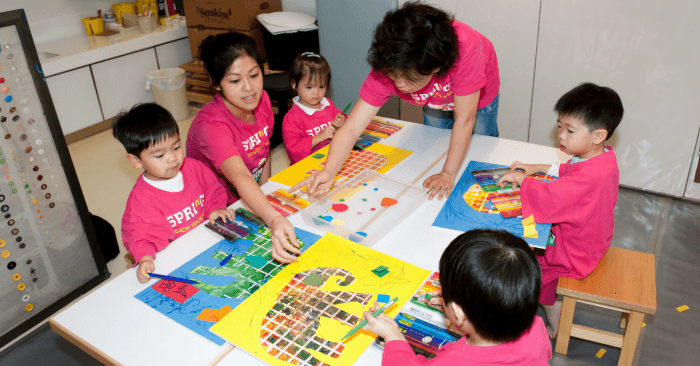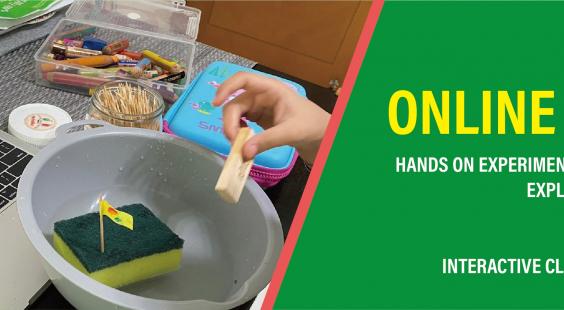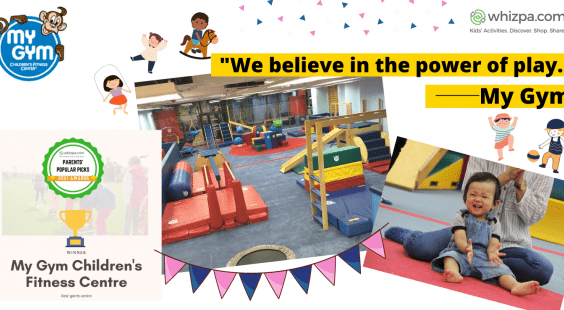
Add an artful touch to your life! Painting classes for children
Art is therapeutic. Not only does art allow us to express our emotions, it is a perfect medium for us to unleash our creativity. It is no exception for children either.
Why is painting good for children? It encourages holistic development. There are multiple facets in learning to paint. From a cognitive perspective, it takes some mental ability to grasp basic artistic elements such as sensitivity to colours, understanding the concepts of shapes and lines, attention to detail, appreciation of textures and the capability to understand composition. From a physical perspective, it also takes fine motor skills to handle a paintbrush. From a more affective perspective, how do you express happiness using shapes? What colour symbolizes sadness? In fact, it takes a lot of imagination to transform an emotion in mind to graphical expressions on a canvas. Painting is more than just maneuvering a paintbrush, it is indeed an orchestrated effort of the cognitive, affective and motor abilities of children.
In this article, we will cover 2 types of general painting classes that are good for infants or young children who have no previous exposure to painting. Painting is a big umbrella term covering many streams of painting styles using different paints - from Western paints, like oil and acrylic to Eastern paints, like ink. We will cover the classes teaching specific painting styles in future articles, so stay tuned!
Age-specific painting classes
(Source: Foon Art Centre)
Some art centers offer very structured art classes for children of different ages. The content of each module is modeled after the developmental stages of children, with age-appropriate levels of difficulty. A series of age-specific courses typically starts with encouraging infants to explore some elementary elements of painting such as shapes and colours. When they progress, they will learn advanced skills such as balancing proportions and exploring different painting media, that will deepen their art literacy.
The development of children’s capabilities is gradual, so painting classes should also follow the same gradual progression. Age-specific painting classes prevent children from being disheartened by not being able to master skills beyond their capability. These classes also strike a healthy balance between technical skills development and personal creative exploration.
Art Jamming
(Source: Anastassia's Art House)
While age-specific classes might have a clear agenda of what to learn in each lesson, there is simply one thing to do in an art jamming session - to have fun! Although the sole purpose of art jamming might be having fun, it is an equally great learning opportunity for children.
Art jamming is part of an increasingly popular mode of lessons - unstructured play. Unstructured play is said to be conducive to letting children unleash their true colors. Creativity is best developed when restrictions are absent. Unstructured art jamming will be messy - with paint all over the place and on the children themselves - but in a controlled environment. Parents will also be able to peek into the little minds of their children through seeing the artwork they have produced in an unrestricted manner as well!
Pottery
(Source: ActiveKids)
What is better than seeing your paintings transformed into something that will last a lifetime? If your children are already exploring painting on traditional canvas, bring in some novelty by letting them paint on pottery! Pottery painting is an alternative that offers something traditional painting classes cannot offer - painting on 3-dimensional objects. Painting on 3-dimensional objects requires the painter to constantly rotate the object in the process of painting and requires even more sophisticated motor control. Pottery painting classes are a great complement to any traditional painting classes. The range of pottery children can paint on typically includes plates, mugs, and picture frames. The painted pottery will be glazed so the painting will last forever.
Painting is a good activity option for young children, given the multiple abilities painting can train children on. We have recommended some general art classes that focus on letting children experience and feel art. It is never too late to start official training on painting techniques after your child has shown determination to continue their training as a painter. If your children show great interest after some experiential painting classes, you can enroll them in painting classes that specifically develop mastery of particular painting media, to pave the way for building their own artwork portfolio or even enrolling in HKDSE or IB Diploma Visual Art modules in the long run. Happy Painting!
We have different trial or regular art classes listed on Whizpa.E-Shop. Be sure to check out our database to choose the right class for your kids! If you have enrolled your children in any painting classes, please leave a review on our Whizpa site! Your reviews will be beneficial for the continual improvement of art education in Hong Kong!








